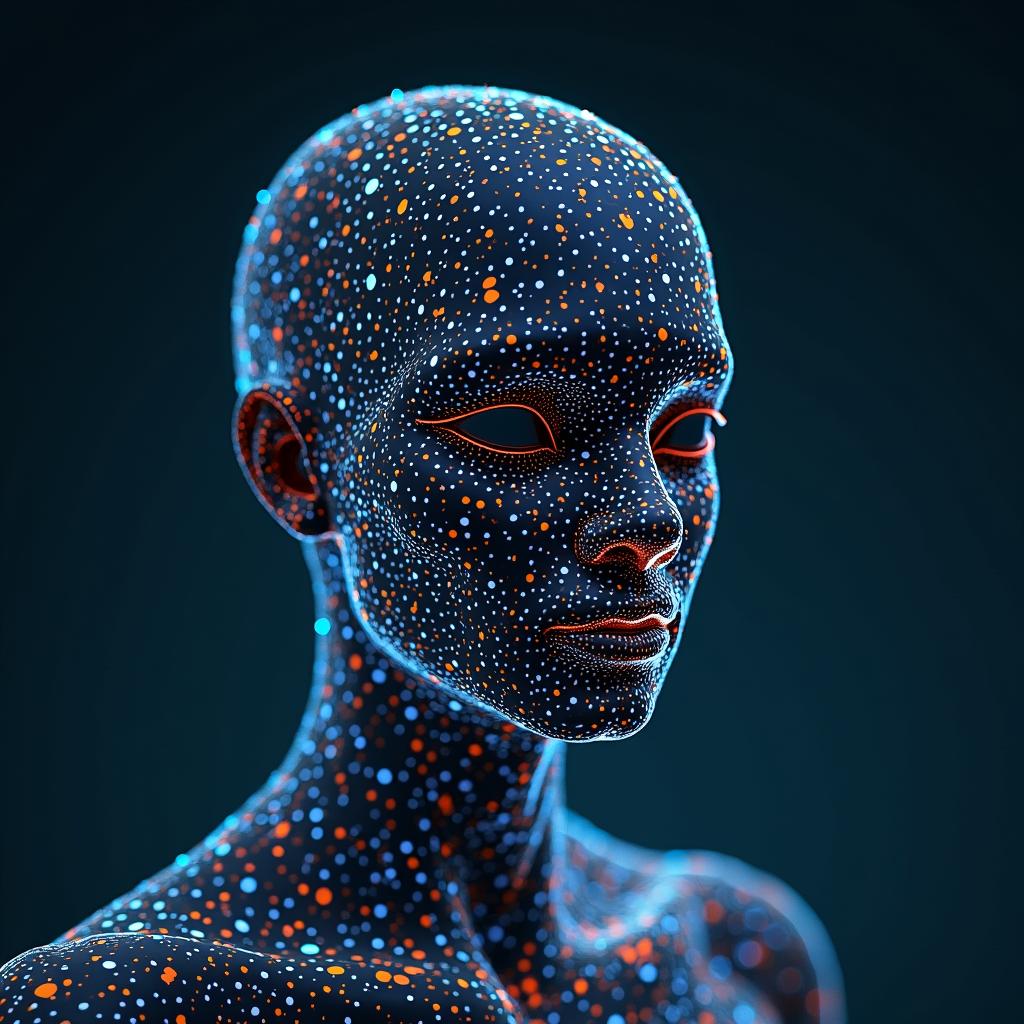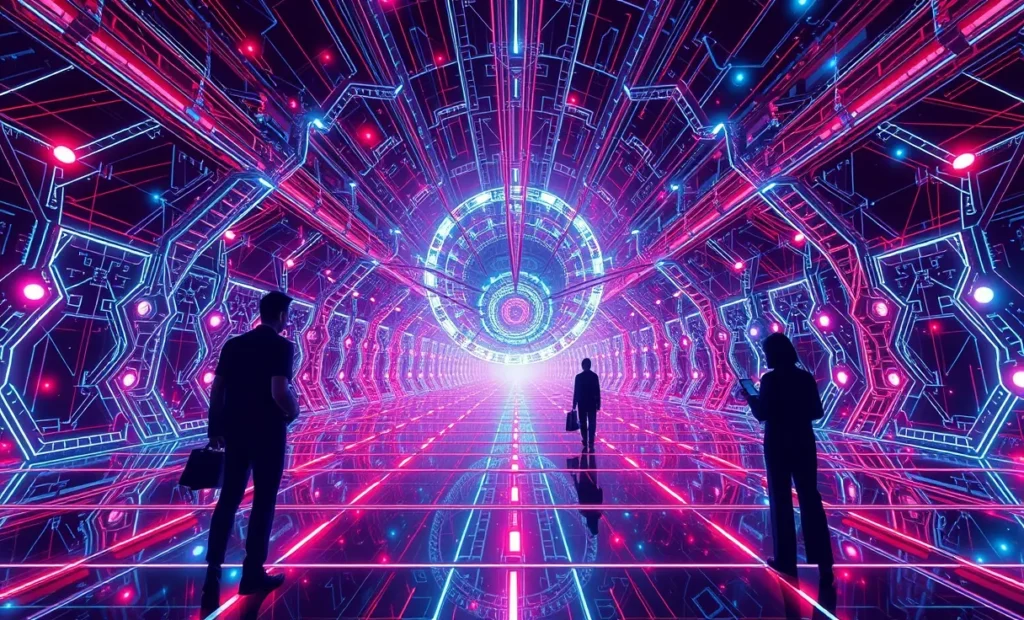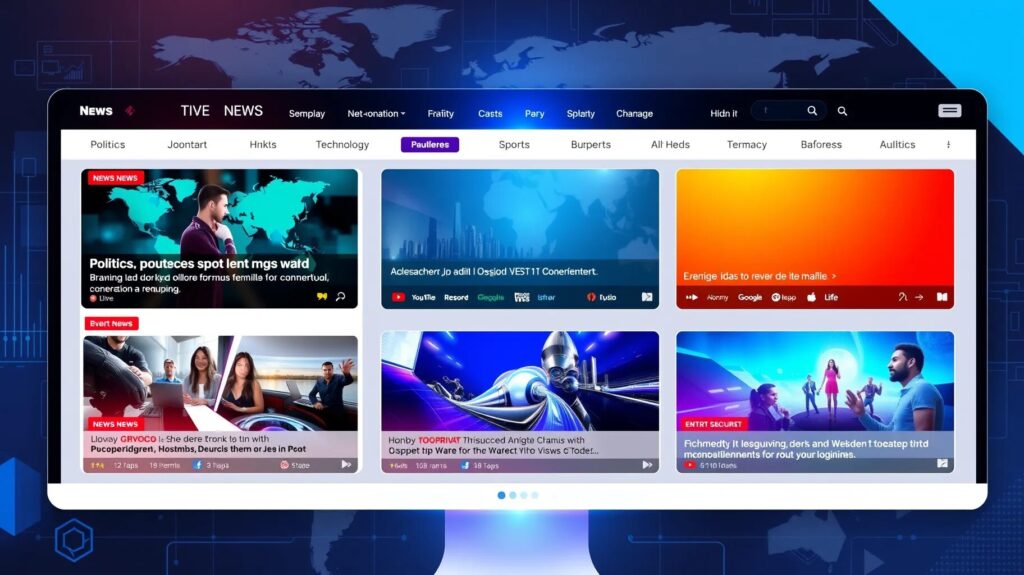
Generative AI has been a game-changer in creative industries, pushing the boundaries of what’s possible with automation and human imagination. Below, we dive into how these algorithms are transforming creativity, from personalized storytelling to stunning visual artistry.
Understanding Generative AI and Its Core Innovations
What Is Generative AI?
Generative AI refers to algorithms, like GANs and transformers, designed to generate new data resembling the input they’re trained on. From text to visuals, it enables machines to create content that feels remarkably human.
These algorithms don’t just replicate—they innovate. For instance, tools like OpenAI’s GPT models or DALL·E create text and visuals that are indistinguishable from human-created work.
How It Differs from Traditional AI
Unlike traditional AI, which is task-oriented and predictive, generative AI focuses on creation. This means it can write a story, compose a melody, or design artwork—tasks once thought to be exclusively human.
Key innovations include:
- Natural language understanding for seamless communication.
- Multi-modal capabilities, blending text, audio, and visuals.
- Unsupervised learning, allowing for creativity without explicit programming.
Transforming Content Creation

Personalized Storytelling at Scale
Generative AI can craft stories tailored to specific audiences. Tools like Jasper or Copy.ai allow businesses to produce personalized blog posts, emails, or ads with minimal input.
Imagine an author creating interactive fiction where readers dictate plot points. This level of personalization was unthinkable just a decade ago.
Generating Visual Art and Design
AI art tools like DALL·E and Stable Diffusion empower artists to create images based on textual descriptions. The result?
- Hyper-realistic designs.
- Whimsical concepts made real.
- Quick prototypes for commercial use.
Creative teams now save time while pushing artistic boundaries.
Video and Animation Production
Generative AI has made strides in video creation. Tools like RunwayML allow users to create professional-quality animations by simply inputting ideas. These tools are revolutionizing industries like marketing and filmmaking.
Bridging Technology and Creativity
Democratizing Creativity
Generative AI has leveled the playing field. Even those without technical or artistic skills can now produce high-quality content. Tools with intuitive interfaces have lowered barriers for creators worldwide.
This democratization has sparked innovation in:
- Independent game development.
- Self-published books and comics.
- Small-scale content marketing campaigns.
Enhancing Human-AI Collaboration
Generative AI is not about replacing creators but collaborating with them. Artists and writers now partner with algorithms to enhance their visions.
For example:
- Writers use AI to refine ideas or craft dialog.
- Designers rely on AI for rapid prototyping.
Expanding Generative AI’s Creative Reach
Revolutionizing Music Composition
Generative AI is making waves in the music industry by composing unique melodies and harmonies. Tools like Amper Music and AIVA (Artificial Intelligence Virtual Artist) help musicians and non-musicians create professional-sounding tracks.
AI-generated music is used in:
- Movie scores and game soundtracks.
- Personal projects and content creation.
- Tailored playlists for brands or events.
The result is a quicker creative process, enabling musicians to focus more on refinement and performance.
Innovating Fashion and Product Design
Design industries, particularly fashion, have embraced generative AI. Algorithms analyze trends, materials, and consumer preferences to suggest innovative designs.
Applications include:
- Designing virtual outfits for gaming and metaverse platforms.
- Generating prototypes for sustainable clothing.
- Crafting bespoke items using customer-specific data.
Brands are now blending functionality with aesthetics in ways never imagined.
Generative AI in Storytelling and Media
Creating Interactive Narratives
Generative AI powers interactive stories where readers or players can influence the plot. This dynamic storytelling approach makes entertainment more engaging and personal.
Popular applications include:
- Gaming narratives that adapt to player choices.
- AI-driven screenwriting to generate new plot ideas.
- Creating personalized bedtime stories for kids via apps like StoryWizard.
Journalism and Content Writing
AI-driven platforms like ChatGPT and Writesonic assist journalists by drafting news reports, op-eds, and technical articles. These tools generate content faster while allowing writers to focus on deeper analysis and investigative reporting.
However, ethical concerns remain, particularly regarding bias and misinformation, requiring careful human oversight.
Redefining Creative Workflows
Speeding Up Prototyping Processes
Generative AI has transformed how industries develop ideas, particularly in architecture and industrial design. Programs like Rhino and Grasshopper generate 3D models and explore form iterations faster than ever.
This streamlining leads to:
- Reduced design time.
- Faster identification of viable concepts.
- Enhanced collaboration between creative and technical teams.
Generating Low-Cost Solutions
Startups and small businesses benefit from AI-driven low-cost content generation. Instead of hiring full-scale creative teams, they leverage tools to create graphics, videos, or copy.
This cost-efficiency ensures accessibility while supporting growth and innovation.
Challenges and Ethical Implications
Addressing Copyright and Originality
Generative AI often draws from massive datasets that include copyrighted material. This has sparked debates about:
- Ownership of AI-generated content.
- Legal risks when AI replicates protected designs.
Creators must navigate these challenges to ensure ethical and legal compliance.
Balancing Creativity and Automation
Critics argue that over-reliance on AI may dilute human creativity. While AI produces impressive results, it cannot replicate the nuanced emotions behind art or storytelling.
Finding a balance between human insight and machine efficiency will be crucial moving forward.
Generative AI in Education and Training
Revolutionizing Educational Content
Generative AI is reshaping how educational materials are created. Tools like ScribeSense and Quizlet integrate AI to produce personalized learning modules and assessments.
Key benefits include:
- Interactive simulations for science experiments or historical events.
- Automatically generated quizzes and study guides tailored to individual needs.
- Adaptive learning systems that adjust to a student’s progress in real time.
This transformation ensures engaging, scalable education for learners of all ages.
Virtual Training and Skill Development
Incorporating generative AI into professional training enables hyper-realistic simulations. Fields like healthcare, aviation, and customer service are adopting this approach for:
- Virtual surgery and diagnostic training for doctors.
- Scenario-based role-playing for customer-facing industries.
- Interactive coding tutorials for software developers.
These immersive experiences reduce costs and improve skill retention.
Generative AI and the Metaverse

Enhancing Virtual Environments
Generative AI plays a vital role in designing metaverse spaces. It creates highly detailed environments, from futuristic cities to fantasy worlds, by processing simple text prompts.
AI tools like NVIDIA Omniverse power:
- Realistic architecture for virtual offices and meeting rooms.
- Interactive worlds for gaming and entertainment.
- Customizable avatars with lifelike expressions and behaviors.
This seamless blend of creativity and technology brings the metaverse closer to reality.
Expanding Social Experiences
In virtual environments, generative AI enhances social interactions. AI-powered NPCs (non-playable characters) adapt to users’ behavior, creating meaningful, dynamic experiences.
Applications include:
- Story-driven multiplayer games.
- AI-guided virtual tours for museums or events.
- Personalized AI companions offering social and emotional engagement.
The Role of Generative AI in Healthcare
Streamlining Medical Documentation
Generative AI tools like Nuance Dragon streamline tedious medical documentation processes by transcribing and summarizing patient data. This gives healthcare professionals more time to focus on patient care.
Key advancements include:
- Generating personalized treatment plans.
- Automating post-visit summaries.
- Creating patient-specific educational materials.
These innovations reduce administrative burdens and enhance healthcare efficiency.
Revolutionizing Medical Imaging
Generative adversarial networks (GANs) are revolutionizing medical imaging and diagnostics. By improving the quality of scans and detecting anomalies, they:
- Assist in early disease detection (e.g., cancer screening).
- Generate 3D models for surgical planning.
- Simulate disease progression for research purposes.
This precision-driven approach is saving lives and advancing medical research.
Future Trends in Generative AI
Real-Time Creative Applications
The next wave of generative AI focuses on real-time processing, enabling creators to adjust outputs instantly. From live music composition to on-the-fly video editing, this immediacy will transform industries.
For example:
- VJs (video jockeys) using AI for live event visuals.
- Artists generating dynamic installations that respond to audience interaction.
- Gamers designing maps or characters during gameplay.
Integrating Quantum Computing
As quantum computing matures, it will unlock new dimensions for generative AI. With enhanced processing power, algorithms can analyze and synthesize vastly larger datasets.
This could lead to breakthroughs like:
- Creating lifelike simulations of natural phenomena.
- Accelerating research in pharmaceutical drug development.
- Unlocking deeper insights in climate modeling and predictions.
Generative AI and the Workforce
Redefining Creative Jobs
Generative AI is shifting how creative professionals work. Instead of handling routine tasks, they can focus on:
- Overseeing and refining AI-generated content.
- Developing unique, emotionally resonant ideas.
- Collaborating with AI to expand creative boundaries.
This dynamic promises to increase productivity while retaining the human touch.
Fostering New Career Paths
Entirely new job categories are emerging, including:
- AI art curators for galleries and exhibitions.
- AI ethicists to address social and legal concerns.
- Prompt engineers specializing in fine-tuning AI algorithms.
Generative AI will redefine not just workflows but also what it means to be creative.
Conclusion: Generative AI’s Unstoppable Momentum
Generative AI has proven to be more than just a technological trend—it’s a paradigm shift reshaping creativity, industry, and society. By bridging the gap between human imagination and machine innovation, it opens limitless possibilities for the future. Whether in education, healthcare, marketing, or the arts, the transformative power of generative AI is just getting started.
FAQs
Is content generated by AI copyrightable?
This is a gray area. Generally, AI-generated content cannot be copyrighted, as copyright laws often require a human creator. However, some jurisdictions allow for copyright if the AI’s user contributes significantly to the creative process.
For example, if a designer uses AI to draft an image but significantly alters it, they may claim copyright for the final work.
What industries benefit most from Generative AI?
Generative AI is versatile and impacts nearly every industry. Major beneficiaries include:
- Entertainment: AI assists in generating scripts, music, and visual effects.
- Healthcare: AI models create synthetic medical data for research and diagnostics.
- Marketing: Tools like Jasper and Copy.ai generate ad copy and email campaigns.
Even niche sectors, like architecture and fashion, are leveraging AI for design innovation and trend forecasting.
Are there ethical concerns with Generative AI?
Yes, ethical issues include the misuse of AI for plagiarism, misinformation, or creating biased outputs. Ensuring transparency, accountability, and fairness in AI systems is critical.
For example:
- Deepfakes, a product of generative AI, can mislead or harm public trust.
- Training AI on biased datasets may lead to discriminatory outputs.
Regulations and ethical guidelines are essential to address these challenges.
How can I start using Generative AI?
Begin by identifying your needs and exploring user-friendly tools:
- Content Creation: Tools like Writesonic or Jasper are ideal for marketing and writing.
- Art and Design: Platforms like Canva or DALL·E make creating visuals easy.
- Music: Amper Music or AIVA let you compose tracks effortlessly.
Many platforms offer free trials or tutorials to get you started.
Does Generative AI require programming skills to use?
Not necessarily. Many generative AI tools are designed to be user-friendly and accessible to non-programmers. Platforms often include drag-and-drop interfaces or simple text prompts for generating content.
For example:
- Canva offers AI tools for generating images and enhancing designs without needing any technical knowledge.
- Copy.ai allows users to create marketing copy just by describing their goals in plain language.
However, advanced applications, like customizing AI models, may require programming expertise.
How accurate is Generative AI in creating content?
The accuracy of generative AI depends on the quality of its training data and the context of its use. While it excels at producing grammatically correct and visually stunning outputs, it may:
- Struggle with niche or specialized topics.
- Introduce inaccuracies, especially if data sources are outdated.
For example, GPT-based tools might produce convincing text but could misinterpret user input or provide factually incorrect information without proper guidance.
Can Generative AI improve over time?
Yes, generative AI improves with better training data, updates, and feedback. Continuous advancements in machine learning research also enhance its capabilities.
For instance:
- Developers fine-tune models with user feedback to improve text quality and reduce biases.
- Regular updates, like OpenAI’s GPT series, introduce significant leaps in performance and reliability.
The more AI learns, the more precise and creative it becomes.
What are the limitations of Generative AI?
Despite its capabilities, generative AI has limitations:
- Creativity constraints: AI lacks human intuition and emotional understanding.
- Data dependency: Outputs heavily rely on the quality and diversity of training data.
- Ethical risks: Without oversight, AI can produce misleading or harmful content.
For example, an AI model trained on biased datasets might unintentionally reinforce stereotypes. Similarly, AI-generated content might lack the cultural nuance required for specific audiences.
How is Generative AI used in gaming?
Generative AI enhances gaming by creating dynamic worlds, characters, and stories. It adapts experiences to players, improving immersion.
Key examples include:
- Procedurally generated maps in games like No Man’s Sky.
- AI-driven NPCs that react uniquely to player actions.
- Customizing avatars and skins using AI design tools.
This technology saves developers time while creating highly personalized gaming experiences.
Is Generative AI safe to use?
Generative AI is generally safe, but risks exist, especially with misuse. These include generating:
- Deepfakes or manipulated media that mislead audiences.
- Fake news or spam content.
- Inaccurate or biased information if the AI is poorly trained.
Users should always review AI-generated outputs for quality and authenticity, particularly in sensitive areas like healthcare or journalism.
How is Generative AI helping small businesses?
Small businesses leverage generative AI for cost-effective solutions, such as:
- Automating social media content with tools like Buffer or Jasper.
- Designing logos and marketing visuals through platforms like Looka or Canva.
- Personalizing customer communications via AI chatbots.
For example, a local bakery can use AI to create eye-catching social media posts and automate email campaigns, saving both time and resources.
Will Generative AI replace jobs?
Generative AI may shift job roles rather than outright replace them. It automates repetitive tasks, enabling workers to focus on strategic and creative aspects of their jobs.
For instance:
- Copywriters might rely on AI to draft content, then fine-tune it for tone and messaging.
- Designers could use AI to generate mockups while dedicating more time to user experience.
New roles, like AI prompt engineering and AI ethics consulting, are also emerging as the technology evolves.
Can Generative AI work offline?
Some generative AI tools can function offline if they’re based on locally deployed models. However, most cutting-edge tools rely on cloud-based systems to access large datasets and computational resources.
For example:
- Offline tools like local Stable Diffusion instances allow artists to generate visuals without internet connectivity.
- Cloud-based platforms like OpenAI’s GPT or Canva require online access to perform complex tasks and updates.
Choosing between online and offline solutions depends on your privacy, resource availability, and scalability needs.
Resources
Beginner-Friendly Tools and Platforms
These tools are perfect for newcomers to generative AI who want to start experimenting:
- ChatGPT by OpenAI: A user-friendly text generator for brainstorming, content creation, and more.
Explore ChatGPT - DALL·E: Generates stunning images from text prompts. Ideal for creative projects.
Try DALL·E - Canva: Includes AI tools like text-to-image for designing visuals with minimal effort.
Visit Canva
Advanced Generative AI Resources
For professionals or developers looking to push boundaries, these resources are invaluable:
- Runway ML: A tool for generating AI-powered videos and animations.
Explore Runway ML - Stable Diffusion: Open-source software for generating realistic images and artwork.
Learn about Stable Diffusion - Hugging Face: A platform offering pre-trained models and tools for text, images, and more.
Check out Hugging Face
Tutorials and Learning Platforms
To better understand the workings of generative AI, these learning platforms and guides can help:
- Coursera – Generative AI Specializations: Offers in-depth courses on AI technologies.
Explore Coursera AI Courses - Kaggle: Provides datasets and AI tutorials for hands-on learning.
Visit Kaggle - DeepLearning.AI: A resource offering structured courses on machine learning and AI applications.
Learn with DeepLearning.AI
Community Forums and Collaboration Platforms
Join these communities to exchange ideas and stay updated on trends:
- Reddit – r/MachineLearning: Discuss generative AI developments with experts and enthusiasts.
Visit Reddit - AI Alignment Forum: Dive into ethical discussions and AI safety topics.
Join the Forum - GitHub: Access repositories and collaborate on generative AI projects.
Explore GitHub
Research Papers and Publications
Stay informed on the latest advancements in generative AI through these publications:
- arXiv.org: Search for research papers on generative AI, GANs, transformers, and more.
Visit arXiv - OpenAI Blog: Regularly publishes articles about advancements in generative AI.
Read OpenAI Blog - Google AI Blog: Covers cutting-edge AI research and applications.
Explore Google AI Blog
Ethical and Regulatory Guidance
Understanding the ethics and governance of generative AI is essential:
- AI Ethics Guidelines by UNESCO: Outlines responsible AI use and development.
Learn More - Partnership on AI: A global initiative promoting responsible AI practices.
Explore Partnership on AI
These resources will help you explore, create, and learn in the exciting world of generative AI.





